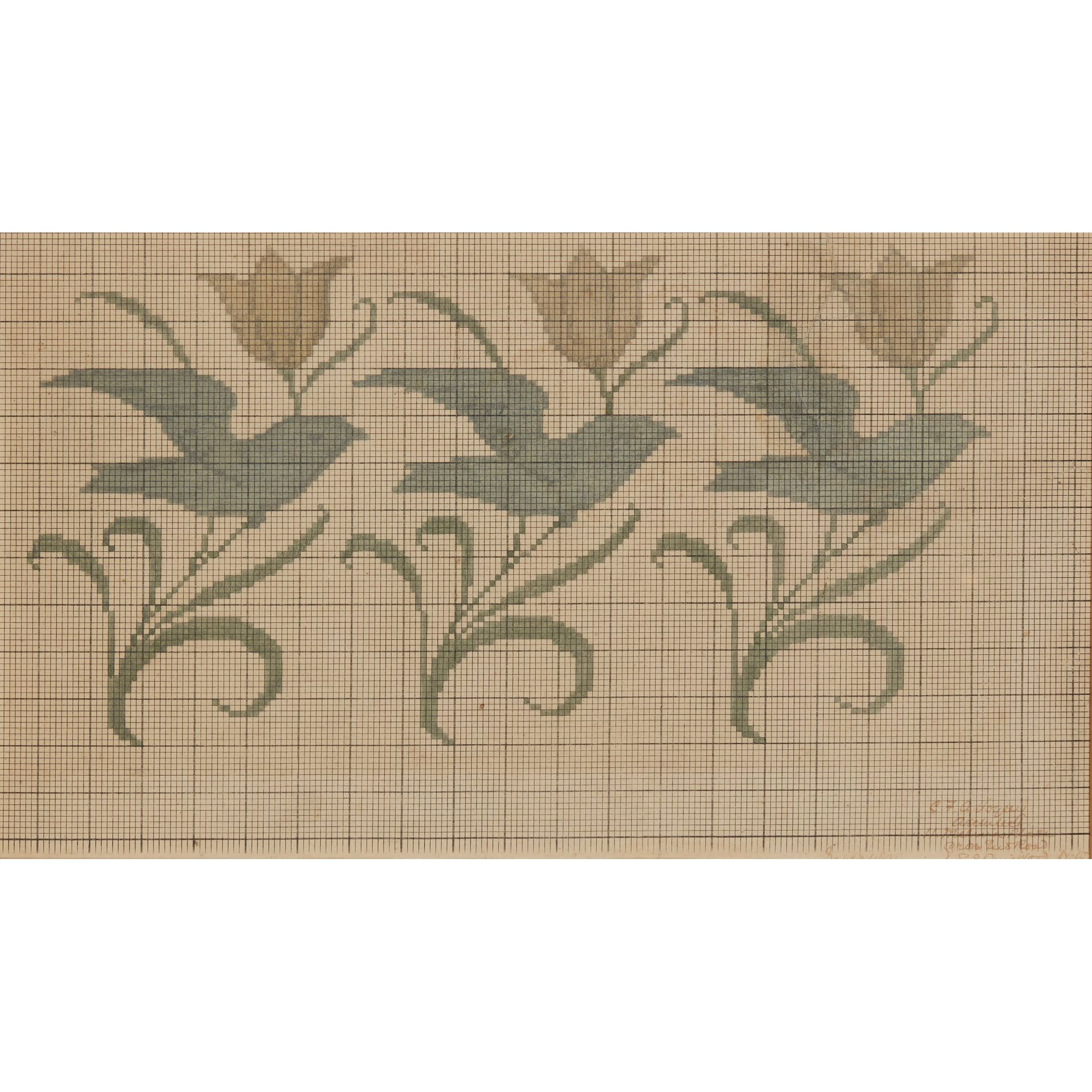Description
C.F.A. VOYSEY (1857-1941) ORIGINAL DESIGN FOR A NEEDLEWORK
Watercolour on graph paper, signed, dated and inscribed lower right C.F.A. VOYSEY/ ARCHITECT/ 11 MELINA PLACE/ GROVE END ROAD/ ST JOHNS WOOD, NW/ SEPT. 1891, oak frame (Dimensions: 49cm x 31cm) (49cm x 31cm) Provenance: C.F.A. Voysey, until his death in 1941, thence by descent The Fine Art Society, London Footnote: Exhibited: The Fine Art Society, in association with Haslam & Whiteway, Architects for a New Age 2008, No. 80 Note: As a designer Voysey paid meticulous attention to detail, designing every aspect of a project whether architectural or in the design of furniture, patterns and metalwork. Concerned by the negative impact of industrialization on design, and handicrafts in particular, Voysey became a major proponent of the Arts & Crafts ideals. He set out to create simple but functional items, inspired by the natural world and produced with the spirit of craftsmanship in mind, thereby enriching the lives and homes of everyday Britain. Whilst many of his contemporaries opted to set up small-scale workshops to achieve this, Voysey forged links with an impressive network of commercial manufacturers and retailers, knowing that this would further disseminate these beliefs and allow beautifully designed goods to be accessible to a much larger market. In 1897, Voysey’s output as a pattern designer for fabrics and wallpapers was significant; he signed three contracts with major manufacturers, agreeing to supply thirty original wallpaper designs per year to Essex & Co., ten carpet designs to Tomkinson & Adam, as well as a further ten for Alexander Morton & Co. Two of the designs offered in the proceeding lots feature marks for Tomkinson & Adam and, together with a further two needlework designs, illustrate a period where Voysey’s energy and originality were at their highest. His fabric designs are typically produced on standard graph paper, used for setting up steam-driven looms. Tomkinson & Adam’s looms were American and so specific grids were required for different types of machinery and weaves. These designs, so charming and vivid in their colours, serve as important interpretation tools for the technicians to bring the designs to life, direct from the master’s hand. To ensure quality and that the end-products remained true to Voysey’s intent, he often made several annotations leaving instructions concerning the repeat and colouring of the design for the weavers, as is exemplified in several of the following lots. Interestingly, in lot 147, he notes that the design was sold Stanway, an influential businessman who bought patterns from designers to be made into cloths and various fabrics for sale in his London and Parisian retails outlets. In lot 149, the design for a gas fire, Voysey also displays a strong sense of refinement and elegant proportion in the balanced linear forms, as well as a clear vision for the finished piece as he indicates his deliberate choice of materials in the annotations. In a similar vein to William Morris, Voysey saw nature as his most important source of inspiration, as is clear from these designs. Arguably the motifs most synonymous with his work are the bird, heart and crown, the latter two representing love and loyalty: sentiments which he valued dearly. Rather than copy directly from what he saw, he believed that abstraction and inventiveness from the artist’s imagination was crucial in achieving good ornament. Indeed, it was this belief that set his designs apart from Morris and others. Towards the end of his career his patterns tend to be figurative, as illustrated in the design for ‘The Sower’. Suitably charming and always beautifully coloured, these designs represent the talented mind of one of the most prolific architect designers of his generation.
143
C.F.A. VOYSEY (1857-1941) ORIGINAL DESIGN FOR A NEEDLEWORK
